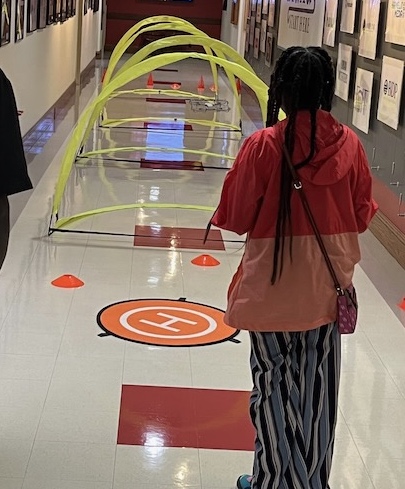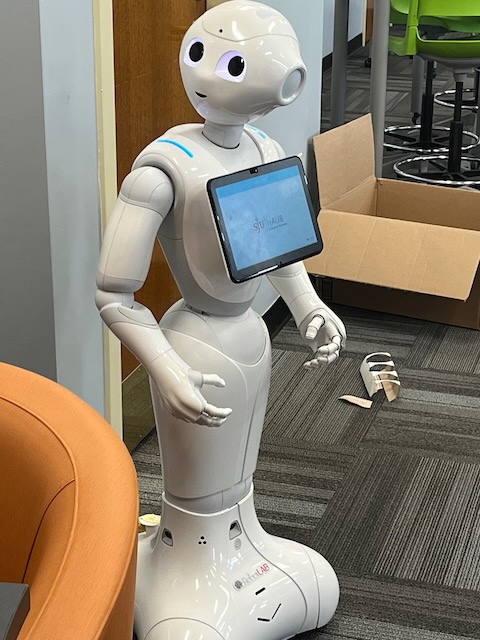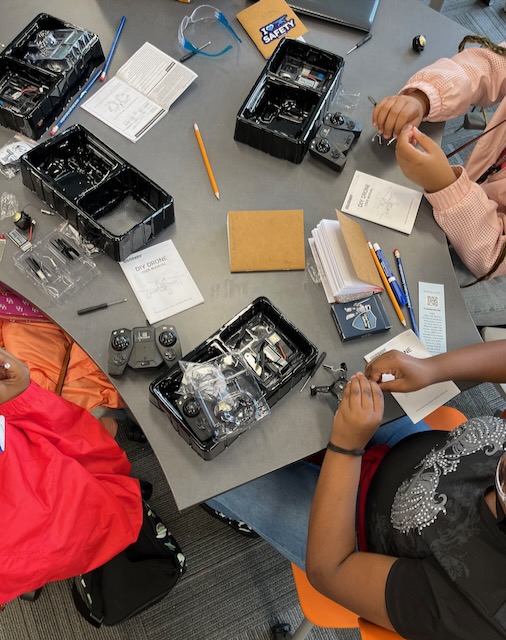
EAGER: SaTC AI-Cybersecurity: Opening Doors for Cybersecurity & AI: An Interdisciplinary Approach to Engaging Middle School Students
Project Aim
In this project, we aim to make cybersecurity and artificial intelligence (AI) more broadly available to middle school students. We are trying to understand what middle school students (and their teachers) know about cybersecurity and AI, what industry believes is essential for students to know to enter careers in these areas, and how to support students in learning about cybersecurity and AI.
Project Goal
We have five proposed outcomes for this work: 1) the development of an interdisciplinary think tank along with a documented process for creating it that can inform others interested in building similar partnerships; (2) the development of survey instruments designed to uncover what middle grades students (and teachers) understand about AI, cybersecurity, the intersection of these two areas, and possible careers available in this interdisciplinary space; (3) findings from the survey focus on what middle grades students and their teachers understand about these areas; (4) an initial theory for supporting teaching and learning of emerging technologies in the middle grades that engages students in learning about cybersecurity and AI in ways that are experiential, grounded in productive failure, and focused on the development of critical understandings such as computational thinking or critical thinking rather than on the specific skills needed to “do” AI and cybersecurity; and (5) a proof-of-concept learning module embodying that theory designed to be implemented by any middle grades teacher anywhere.
What We Do in this Project
We began the project by bringing together an interdisciplinary group of professionals that included: k-12 teachers, education researchers, computer science researchers, and cybersecurity and AI professionals. We met together three times to develop a consensus about the most important elements of instruction for students at this age and to brainstorm potentially productive pathways.
After that, we began developing different instructional initiatives to engage middle school students with the content. To date, we have implemented two very different approaches and developed portions of other approaches. We have also developed an initial survey to understand what students know about this area. From that we learned that most middle school students have some sophisticated ideas about passwords and online safety, but lack knowledge of more advanced ideas like redundancy in security systems and how AI can be used.
In our final year of this project, we will continue to develop and pilot instructional materials that may be promising for engaging students with the ideas at the intersection of cybersecurity and AI.
Why We Do This Work
Too often, programming is offered as the entry point to computing education. We posit that this excludes students who are less interested in that aspect of engaging with technology. However, we recognize that all students need to be able to interact with and function in a world that is increasingly sophisticated in terms of the ways in which technology intersects with humans. Our work is driven by the understanding that all citizens need to have basic understandings of cybersecurity and AI simply to function safely in the world. We further believe that students who may not be interested in programming, may be interested in other dimensions of the cybersecurity and AI domains. For example, they may be interested in legal or ethical issues, design issues, or creating new opportunities for using these tools. Our approach is to help all students see how relevant this domain is to their daily life, thus opening the door for further exploration by everyone.
Project Abstract
As reliance on technology increases across society, it is critical to develop a population that is more knowledgeable about and engaged in the topics of cybersecurity and artificial intelligence (AI). The aim of the Opening Doors project is to engage industry professionals in the fields of cybersecurity and AI in conversations with educational researchers, AI and cybersecurity researchers, and K-12 teachers. These conversations will serve as a means to identify disciplinary knowledge, including needs and benefits, at the intersection of cybersecurity and AI. The group will work to identify ways to engage middle school students and their teachers in learning about AI, cybersecurity, and the intersections between them. By including this array of voices, the project will generate knowledge about the differences and similarities between industry and academic expectations. The discussion will also drive the development of a survey that can be used to determine what students know about AI and cybersecurity as well as a proof-of-concept instructional module that addresses one of the identified gaps in knowledge. The project team will also document the process for building this interdisciplinary community of practice to focus on a single issue in ways that shape students’ educational experiences. The project will determine whether investing effort into deciphering what middle school students do know, and what they can know, will lead to students who are more engaged in cybersecurity and AI as citizens, users, programmers, or in other roles as they mature into adulthood.
The outcomes of this project will advance understanding of the nature of expertise of researchers and professionals in AI and cybersecurity, as well as supporting and studying communication between them, while exploring ways to translate that expertise into curricula for widespread dissemination to middle school teachers and students. The project team will use a combination of qualitative and quantitative approaches to accomplish the following outcomes: (1) the development of an interdisciplinary think tank along with a documented process for creating it that can inform others interested in building similar partnerships; (2) the development of survey instruments designed to uncover what middle grades students understand about AI, cybersecurity, and the intersection of these two areas as they affect their lives, as well as possible careers available in this interdisciplinary space; (3) findings from the survey on possible gaps as well as what middle grades students understand about these areas; and (4) one proof-of-concept learning module that can be implemented by any middle school teacher anywhere.
Future Forward: Cybersecurity & AI



For more information, visit kaputcenter.org/projects/present-work/opening-doors-for-cybersecurity-ai/


